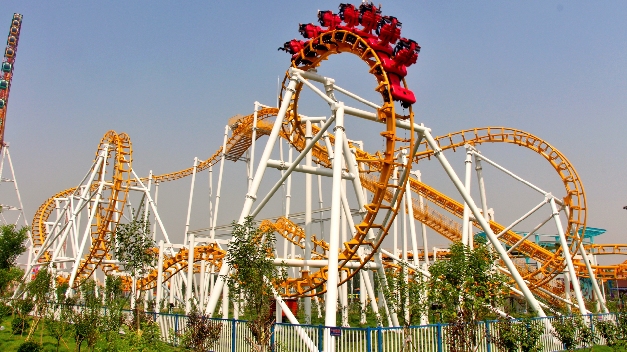Exploring the Thrills and Excitement of Digital Roller Coaster Experiences in Virtual Reality
The Thrill of Virtual Roller Coasters A Glimpse into the Future of Amusement Parks
In recent years, virtual reality (VR) technology has revolutionized the entertainment landscape, offering experiences that were once thought to be the sole domain of physical amusement parks. Among the most thrilling applications of this technology is the virtual roller coaster, a ride that combines the adrenaline-pumping excitement of traditional coasters with the limitless possibilities of digital environments. As we delve into this phenomenon, we uncover how virtual roller coasters are reshaping our perceptions of thrill-seeking and amusement.
First and foremost, virtual roller coasters provide an unparalleled level of immersion. With the advent of high-quality VR headsets and motion-sensing technology, riders are enveloped in a 360-degree world that replicates the sensations of speed, height, and acceleration. Unlike traditional roller coasters, which are often constrained by physical tracks, virtual rides can take users on fantastical journeys through exotic landscapes, treacherous mountains, or even outer space. Imagine soaring through the clouds above a bustling city or navigating the twisting caverns of a mystical underworld—all from the comfort of your own home or a VR arcade.
Moreover, the flexibility of virtual roller coasters can cater to diverse audiences. While some theme parks are restricted by safety regulations that prevent certain age groups from experiencing intense rides, virtual reality offers a solution. Developers can design rides that adjust in intensity based on the rider's comfort level. For instance, younger children or those with a fear of heights can enjoy gentler simulations, while thrill-seekers can opt for heart-pounding experiences. This adaptability makes virtual roller coasters accessible to a broader audience, ensuring that everyone can participate in the fun.
virtual roller coaster

Additionally, virtual roller coasters also provide an excellent platform for innovation in storytelling and visual effects. Designers can weave intricate narratives into the ride experience, allowing riders to feel as though they are part of an ongoing adventure. For example, a virtual coaster might tell a story of a daring escape from a dragon, where the visuals shift dynamically based on the rider's movements. The use of cutting-edge graphics and audio immersion transforms what was once a straightforward ride into a fully realized experiential journey, pushing the boundaries of traditional theme park attractions.
Another exciting aspect of virtual roller coasters is their potential for social interaction. Many VR platforms allow multiple users to ride simultaneously, even if they are miles apart. This feature enables friends and family to share the experience despite physical distance, fostering social connections that are often absent in traditional amusement park settings. Group ride experiences can be filled with laughter, screams, and shared awe, creating lasting memories that surpass those formed in solitary rides.
However, as with any emerging technology, there are challenges to consider. The cost of high-quality VR equipment and the need for space to safely use it can be barriers to widespread adoption. Furthermore, the maintenance of these systems and the necessity for regular updates to keep the experience fresh and engaging require ongoing investment. Despite these obstacles, many companies continue to invest in virtual roller coaster technology, recognizing its potential to redefine the amusement park experience.
In conclusion, virtual roller coasters represent an exciting frontier in the world of entertainment. By merging the thrill of roller coasters with the capabilities of virtual reality, we are entering an era where amusement knows no bounds. As this technology continues to evolve, it promises to offer increasingly immersive and personalized experiences that will delight riders of all ages. The future of amusement parks is here, and it is more exhilarating than ever.
-
Top Amusement Equipment Manufacturer Rock n Roller Coaster & Carousel ManufacturerJun.10,2025
-
World's Scariest Roller Coaster Experience Ultimate Thrill & HeightJun.10,2025
-
Ultimate Thrill Ride Roller Coaster High-Speed, Safe AdventureMay.30,2025
-
Carousel Mansfield Rides Premium Indoor & Event SolutionsMay.30,2025
-
T3 Roller Coaster High-Thrill, Safe Ride for Theme Parks & ResortsMay.30,2025
-
Roller Coaster Cart Design Custom-Built & High-Safety Thrill Ride VehiclesMay.30,2025
